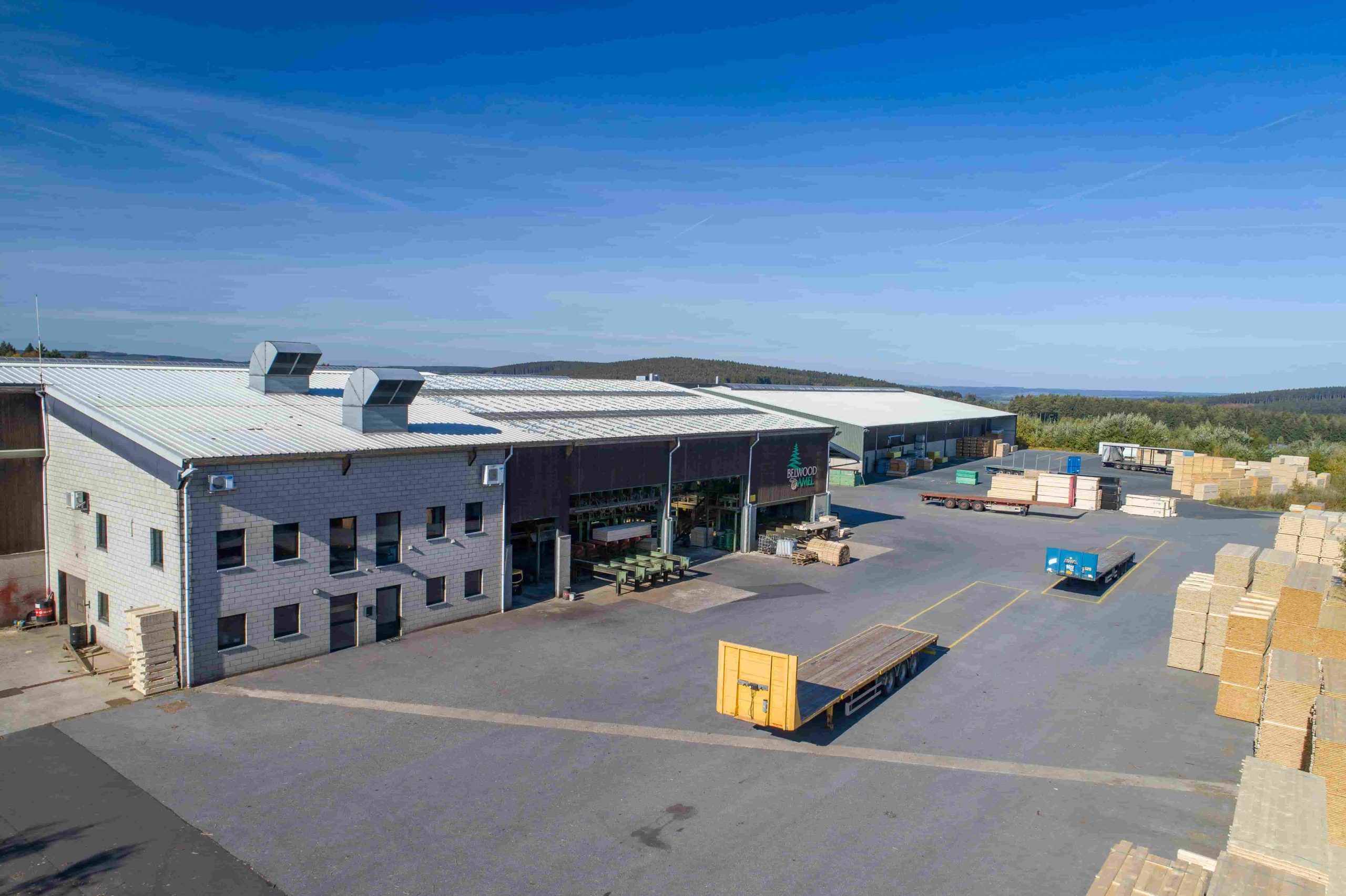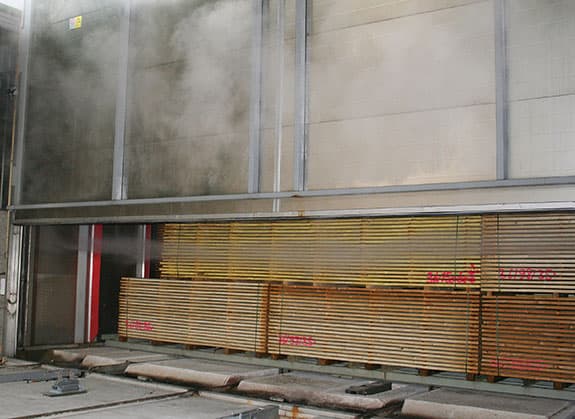
Quality (finishing, control systems, IT…)

From the tree to the plank. A number of quality controls at all levels guarantee end products at a consistently high level:
- Selection of high-quality trees in the forest
- Sorting by quality into more than 100 roundwood boxes
- Visual sorting after sawing
- Visual and machine grading after drying
- Visual sorting after planing
Sawmill
Thanks to sophisticated computer systems, complete control of the production process is guaranteed. For each piece produced, we can trace when it was produced, which quality controls were performed when and by which employee and finally we can point to the exact origin of the timber concerned in the forest.
Our aim is to use the round wood optimally. While cutting the logs, by-products such as wood chips, sawdust are used later on in the production of paper, MDF boards or pellets in local businesses.
Kiln drying

The majority of sawn and planed timber is sold as kiln dried timber. Our sawmill was thus the first in the country to invest in a continuous kiln, which enabled us to increase drying capacities many times over. Our clients benefit from timber with constant moisture and all the advantages that arise from this:
- No more mould
- Mostly we can forgo chemical wood preservatives
- Significant weight savings (more than 50%)
- Virtually unlimitedly storage ‘shelf life’
- Significantly improved handling for the consumer
- Heat treatment according IPPC 15 norms.
Grading & quality control

We sort in accordance to CE Standard 14081. All structural timbers are sorted by visual and machine grading according to European standards. The customer has the guarantee of a consistent and standardised quality.
Finger jointing and gluing
A large portion of our timber production is used in our own glulam production to create high-grade building materials.
There, boards are controlled manually, defects are marked and cut out automatically.
In the next step, finger joints are milled in the fronts of the boards, which are now of different lengths due to the cutting process. The finger joints are glued and the elements are connected under pressure to form longer lamellas.
Those lamellas are then cut on size, and test pieces are taken out to check the stability of the joints.
If they’re going into glulam production, the next step is applying a PUR-glue on the lamellas, they’re then piled up to the desired size by using a paternoster lift, and then put in a hydraulic press.
The last step, after planing, is the stacking and packaging of the packs, wich are then ready for shipping.
Wood preservation
Besides kiln drying, an additional treatment with wood preservatives according wood durability class 2 can be done.
Doing so, the timber is dipped for a certain time in said wood preservative. The customer has the choice between 3 colours: green, yellow and colourless.
This treatment gives an additional protection against insects, fungal attacks and discolouration.
Alternatively, the timber can be pressure impregnated (wood durability class 3 or 4).
There, the wood preservative is pressed under high pressure (9 – 10 bar) into the timber

